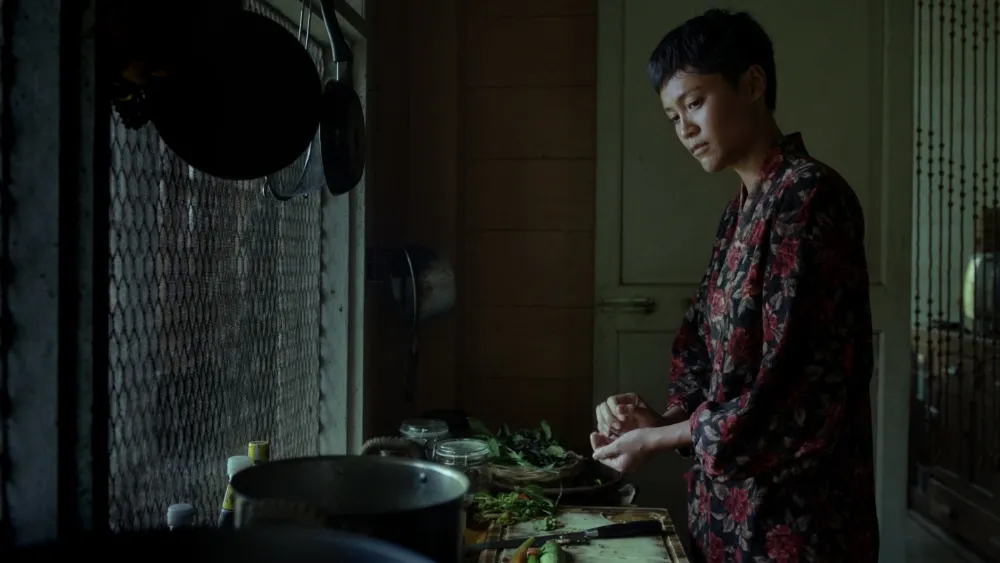Copyright Variety

Film co-production in Asia is still a complex game with substantial challenges, especially in cash flow financing, according to the creative team behind Tokyo International Film Festival competition title “Morte Cucina.” Speaking at a seminar at TIFFCOM, the festival’s market arm, the team behind the five country co-production, which included Thailand, Singapore, Taiwan, France, and Luxembourg, discussed the difficulties balancing the requirements of film funds from each country. The complex structure necessitated the producers parcelling out creative and technical roles based on each country’s contribution. Singapore’s IMDA, for example, has shifted its funding model to prioritise work experience for locals, requiring the production to hire 10 Singaporean “media talents,” the IMDA’s term for a selected list of above and below the line crew. For “Morte Cucina,” this included a lead cast member, first assistant camera operator, wardrobe, and camera grip, who travelled to Thailand for the shoot. Luxembourg took charge of sound mixing, while VFX, foley and colour grading was done in Taiwan. Director Pen-ek Ratanaruang explained how he worked with producer Soros Sukhum to juggle these shifting demands while prioritising his vision for the film. “I would tell Soros: ‘Only a few [key crew elements] that I must have, but the rest, I don’t care’ so that it frees him to become more creative in his producing,” said Ratanaruang. “As a director, I would require only a few things but, but the few things that I required must not move. It has to stay, and then the rest you can do.” He pointed to his collaboration with cinematographer Christopher Doyle as an example of how trusting key crew elements made post-production easier. “I know how he works, I know the way he lights, every scene is so consistent, the color correcting is easy. So I would say, I don’t know Taiwanese color grading, but I’m more than fine for you to go there and do it.” Beyond these operational issues, however, Asian co-productions also face structural hurdles in financing. Even with film fund pledges and, in the case of “Morte Cucina,” a minimum guarantee from French distributor The Jokers, co-productions in Asia suffer from a lack of options in cash flowing their productions. “What we really lack in Asia is sort of like a cash flow facility. Banks do not give loans [to film productions] in this region, compared to Europe or in America,” said seminar moderator, Mylab founder and producer Lorna Tee. “Lots of producers struggle with this when we want to do international co-productions, because a lot of the trenches of payment for the funding is very complicated and does not work according to what the production needs,” Tee said. “Morte Cucina” producer Soros Sukhum agreed, pointing to unorthodox methods they turned to, to cash flow the $1.3 million production. “We do take loans, not from banks, but from wealthy individuals and we’ll give them a credit.” said Sukhum. “And for investors [in the film], if they transfer all the money [ahead of time], we will offer them a premium. When everybody recoups, we will give a premium of 5%.” Producers must also contend with frequent and unpredictable changes in the policies and leadership of national film bodies, which can complicate long-term planning. “In Europe, you have a network which is very much stronger, in fact, between every other country and every co-producer knows very well the rules from each country, whereas in Asia, the rules are also changing a lot every time,” said co-producer Stefano Centini. “And this is another thing that makes it harder for us to always explain with other co-producers, is like, no, actually, what was true yesterday is not true anymore today.” An added complication within Asia, is how national film organizations are often subject to the shifting politics in their respective countries, with leadership often changing hands depending on the ballot box. One aspect that is simpler in Asia compared to Europe is that agencies are more flexible regarding the percentage of investment required to qualify as an official co-production. “In Asia, regulations are a bit more loose, and they allow us, for example, to participate in co-productions, even with a little share, for example,” said Centini. “For this case, I think Taiwan is below 10% which in Italy wouldn’t qualify as an official co-production, but I’m still able to be part of this, because in Asia, we don’t have this kind of very tight structure.”



